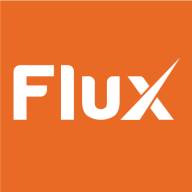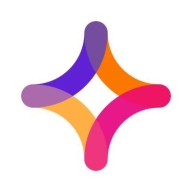

Jitterbit Harmony and Flux are competing data integration platforms. Jitterbit Harmony has the upper hand in pricing and support, while Flux stands out with superior features.
Features: Jitterbit Harmony offers extensive pre-built templates, strong API management capabilities, and a user-friendly approach for quick integrations. Flux provides advanced data processing and transformation features, robust functionality for complex enterprise needs, and a feature-rich set catering to diverse requirements.
Ease of Deployment and Customer Service: Jitterbit Harmony provides straightforward cloud deployment and prompt customer service. Flux offers flexible deployment options including on-premises and cloud but requires more technical expertise, with reliable customer service.
Pricing and ROI: Jitterbit Harmony generally has more affordable, transparent pricing, offering strong ROI for small to medium-sized businesses. Flux involves a higher upfront cost but delivers significant ROI potential for larger enterprises with its extensive integration features.

Flux is an essential tool for data migration, system integration, and real-time data processing, offering scalable solutions that support large datasets and streamline workflows.
Users leverage Flux for managing complex environments with large datasets, automating workflows, and enhancing data consistency across platforms. Its capabilities in real-time data processing, synchronization between different systems, and operational efficiency improvement are frequently highlighted. Users commonly find it flexible and reliable, appreciating its performance in managing scheduled tasks and simplifying data orchestration.
What are Flux's key features?Flux is used across industries like finance, healthcare, and logistics for streamlined operations and optimized data management. In finance, it supports data integrity and compliance. Healthcare organizations use it for real-time patient data processing and integration with various systems. Logistics benefit from improved tracking and coordination.
Jitterbit Harmony is a comprehensive platform for data integration and API management, enabling seamless synchronization and automation across cloud-based and on-premises applications.
Users leverage Jitterbit Harmony to integrate systems like ERP and CRM applications, simplifying complex data workflows and enhancing automation. It supports efficient data migration and ensures smooth connectivity, handling diverse integration needs and helping streamline business processes. Users emphasize its drag-and-drop functionality and extensive templates, which contribute to its robust performance. However, improvements are needed in data mapping, error message clarity, and documentation, especially when dealing with large data volumes.
What are the key features of Jitterbit Harmony?Companies across retail, manufacturing, healthcare, and finance sectors use Jitterbit Harmony to integrate critical applications and automate workflows. In retail, it connects inventory systems with sales platforms, reducing manual effort. Manufacturers sync their ERP systems with supply chain software, optimizing operations. Healthcare organizations integrate patient management systems with insurance databases, streamlining patient care. Financial institutions use it to connect accounting software with banking systems, ensuring real-time financial data exchange.
We monitor all Workload Automation reviews to prevent fraudulent reviews and keep review quality high. We do not post reviews by company employees or direct competitors. We validate each review for authenticity via cross-reference with LinkedIn, and personal follow-up with the reviewer when necessary.